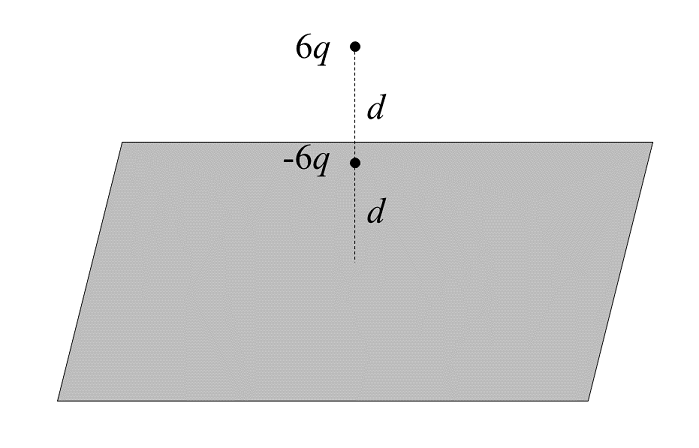Charges And Conducting Sheet

Two charges are placed above an infinite conducting sheet as shown. The first has charge and is placed a distance above the sheet, whereas the second has charge and is placed a distance directly above the first (so that it is a total distance away from the sheet).
Where , suppose represents the magnitude of the force on the first charge (of charge ). What is ?
The answer is 31.
This section requires Javascript.
You are seeing this because something didn't load right. We suggest you, (a) try
refreshing the page, (b) enabling javascript if it is disabled on your browser and,
finally, (c)
loading the
non-javascript version of this page
. We're sorry about the hassle.
By the method of image charges, Laplace's equation is satisfied for the configuration if image charges of charge 6 q and − 6 q are placed, respectively, a distance d and 2 d below the sheet, collinear with the two charges above the sheet.
Such a configuration leads to a net force on the charge of − 6 q of
F = k d 2 3 6 q 2 − k 4 d 2 3 6 q 2 + k 9 d 2 3 6 q 2 = 3 1 k d 2 q 2 .
Therefore, C = 3 1 .